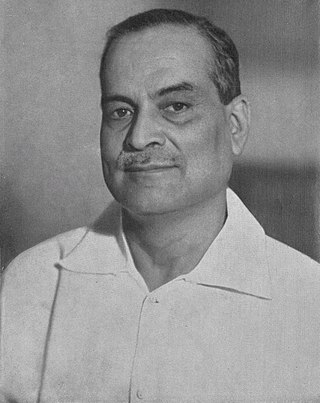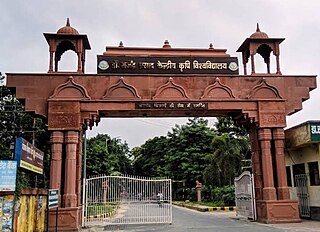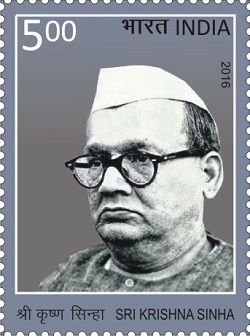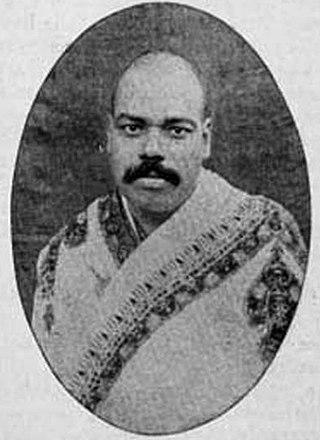
Bihar is a state in Eastern India. It is the third largest state by population, the 12th largest by area, and the 15th largest by GDP in 2021. Bihar borders Uttar Pradesh to its west, Nepal to the north, the northern part of West Bengal to the east, and Jharkhand to the south. Bihar is split by the river Ganges, which flows from west to east. On 15 November 2000, southern Bihar was ceded to form the new state of Jharkhand. Only 11.27% of the population of Bihar lives in urban areas as per a 2020 report. Additionally, almost 58% of Biharis are below the age of 25, giving Bihar the highest proportion of young people of any Indian state. The official language is Hindi, which shares official status alongside that of Urdu. The main native languages are Maithili, Magahi and Bhojpuri. But there are several other languages being spoken at smaller levels.

Rajendra Prasad was an Indian politician, lawyer, journalist and scholar who served as the first president of India from 1952 to 1962. He joined the Indian National Congress during the Indian independence movement and became a major leader from the region of Bihar. A supporter of Mahatma Gandhi, Prasad was imprisoned by British authorities during the Salt Satyagraha of 1930 and the Quit India movement of 1942. After the constituent assembly 1946 elections, Prasad served as 1st Minister of Food and Agriculture in the central government from 1947 to 1948. Upon independence in 1947, Prasad was elected as President of the Constituent Assembly of India, which prepared the Constitution of India and which served as its provisional Parliament.

Bidhan Chandra Roy was an Indian physician and politician who served as Chief Minister of West Bengal from 1950 until his death in 1962. He played a key role in the founding of several institutions and cities like Salt Lake, Kalyani, and Durgapur.

Samastipur is one of the thirty-eight districts of Bihar in India. The district headquarters are located at Samastipur. The district occupies an area of 2904 km² and has a population of 4,261,566.

Shri Krishna Singh (Sinha) (21 October 1887 – 31 January 1961), also known as Shri Babu, was the first chief minister of the Indian state of Bihar (1946–61). Except for the period of World War II, Sinha was the chief minister of Bihar from the time of the first Congress Ministry in 1937 until his death in 1961. He led the Dalit entry into the Vaidyanath Temple, Deoghar. He was the first chief minister in the country to abolish the zamindari system. He was imprisoned for a total of about eight years in British India. He held mass meetings at which he spoke. He was known as Bihar Kesari for his "lionlike roars" in public speaking.

Anugrah Narayan Sinha, known as Bihar Vibhuti, was an Indian nationalist politician, participant in Champaran Satyagraha, Gandhian & one of the architects of modern Bihar, who was the first Deputy Chief Minister and the Finance Minister of the Indian state of Bihar (1946–1957). He was also a Member of the Constituent Assembly of India, which was elected to write the Constitution of India and served in its first Parliament as an independent nation. He also held a range of portfolios including Labour, Local Self Government, Public Works, Supply & Price Control, Health and Agriculture. A.N. Sinha, affectionately called Anugrah Babu, was a close associate of Mahatma Gandhi during the freedom movement and worked with Bihar Kesari Sri Krishna Sinha to lead the Gandhian movement in Bihar. One of the leading nationalists in the Indian independence movement from Bihar after Dr Rajendra Prasad, he was elected as the Congress Party deputy leader in the state assembly to assume office as the first Deputy Chief Minister cum Finance Minister of independent Bihar, and re-elected when the Congress Party won Bihar's first general election with a massive mandate in 1952.

Dr. Rajendra Prasad Central Agricultural University, formerly known as Rajendra Agricultural University, is a public central agriculture university under the Department of Agricultural Research and Education of Ministry of Agriculture and Farmers Welfare and is recognised as Institute of National Importance by government of India. It is located in Pusa, Samastipur district, Bihar.

Ravenshaw University, formerly known as Ravenshaw College, is a co-educational state university situated in Cuttack, Odisha on the eastern coast of India. Founded as Ravenshaw College in 1868, the institution became a university in 2006. The university has nine schools, thirty three academic departments and a student enrolment of nearly 8,000. It is one of the oldest educational institutes in the country and its history is synonymous with the history of modern Odisha.
Bihar has been a major centre of learning and home to one of the oldest universities of India dating back to the fifth century and the tradition of learning which had its origin from ancient times was lost during the medieval period when it is believed that marauding armies of the invaders destroyed these centres of learning.

Mahamahopadhyaya Pandit Ram Avatar Sharma (1877–1929) was an Indian Sanskrit scholar and academic, apart from being an indologist and historian. A professor of Sanskrit in University of Patna in pre-independence years. He was also a renowned Indologist. Dr. Rajendra Prasad, the first President of India and a favourite student of Pandit Sharma, was instrumental in getting his works published after his death. His son, Professor Pandit Nalin Vilochan Sharma was also a professor of Hindi Literature in University of Patna and started the Nai Kavita; New Poetry movement in Hindi literature.

Institute of Post-Graduate Medical Education and Research and Seth Sukhlal Karnani Memorial Hospital, colloquially known as P. G. Hospital, is a public medical college and hospital located in Kolkata, India. It is a national research institute.
Sadaqat Ashram is located in Patna, Bihar, beside the main road of Digha area, on the banks of the River Ganges, almost seven kilometres from the airport. This was one of the residences of Dr. Rajendra Prasad, the first President of India, who lived there after retirement and spent the last days of his life there.

Rajendra Smriti Sangrahalaya is a small biographical museum and a heritage building located in city of Patna, Bihar, India. It is dedicated to the life and works of Dr. Rajendra Prasad, the first president of India.
Sinha Library is a public library in Patna, India. This library has over 1.8 lakh books. Dr. Sinha had donated his collection of around 50,000 rare books, bearing his autograph — including copies of Manu Smriti, Sacred Books of the East edited by F Max Muller, Koran, Buddhist suttas, a copy of original Indian Constitution, works of Jawaharlal Nehru, history politics, literature, Arya Samaj, Buddhism, Hindu scriptures. Some old newspapers like Harijan, published by Mahatma Gandhi from 1933 to 1948, Indian People, Bihari Times, Criterion Searchlight, Leader and Aryavarta are also preserved here along with the congress proceedings since 1885 and parliamentary debates since the inception of Parliament.
Mohan Mishra was an Indian physician, known for his studies on Visceral leishmaniasis, and its treatment using Amphotericin B, regarded by many as a pioneering attempt. The Government of India honoured him, in 2014, with the award of Padma Shri, the fourth highest civilian award, for his contributions to the fields of medicine.
Lala Suraj Nandan Prasad (1914–2009) was an Indian pediatrician and a former professor of pediatrics of the Patna Medical College and Hospital whose efforts were reportedly behind the establishment of the department of pediatrics and the development of the children's ward into a 250-bed Children's Hospital at the institution. He was the founder president of the Indian Academy of Pediatrics when the organization was formed in 1964 though the merger of the erstwhile Indian Pediatric Society and the Association of Pediatricians of India. The Government of India awarded him the fourth highest Indian civilian award of Padma Shri in 1974.
Vallabhbhai Patel Chest Institute is a postgraduate medical institute located in New Delhi, India, and supported by the University of Delhi. The Ministry of Health & Family Welfare of India takes care of its endowment. It has been categorized as one of the constituent colleges of the University of Delhi. The institute's teaching focuses on chest diseases as well as their treatment. The institute is maintained under the statute XX(2) of the University.
Dukhan Ram (1899–1990) was an Indian ophthalmologist, academic, legislator and the vice chancellor of Babasaheb Bhimrao Ambedkar Bihar University. He was the principal of Patna Medical College, one of the oldest medical colleges in India, and the president of Arya Pradeshik Pratinidhi Sabha, a satellite organization of Arya Samaj, founded by Dayanand Saraswati. He successfully contested the 1962 Bihar Legislative Assembly election from Sasaram constituency, on Indian National Congress candidature and served as the president of All India Ophthalmological Society in 1961. The Government of India awarded him the third highest civilian honour of the Padma Bhushan, in 1962, for his contributions to medical science.












